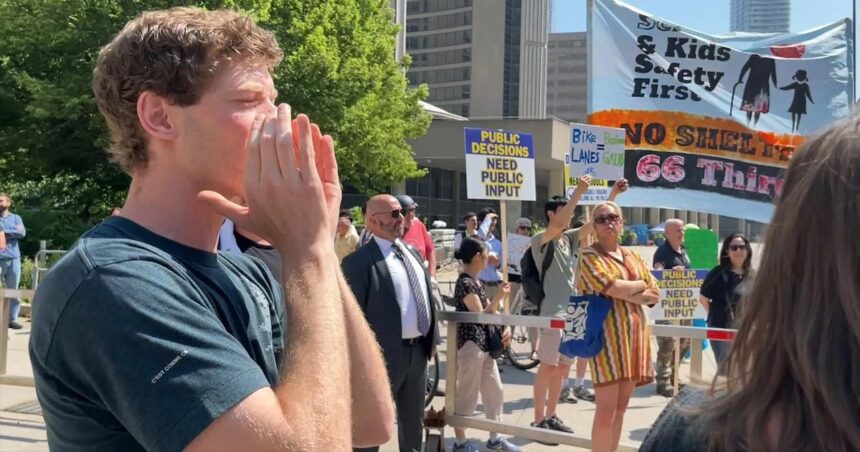I spent my morning in Nathan Phillips Square, where the iconic Toronto sign became a backdrop for clashing voices that reflected our city’s increasingly polarized political landscape. What began as an advertised protest against alleged fiscal mismanagement at City Hall quickly evolved into something more complex as counter-protesters arrived in nearly equal numbers.
The original demonstration, organized by concerned citizens group “Toronto Taxpayers First,” drew approximately 200 people by 11 a.m. Their primary grievances centered on Mayor Olivia Chow’s recent property tax increases and what protesters described as “unchecked spending” on social programs.
“We’re watching our tax dollars disappear into programs that show little accountability,” said Martin Reeves, a small business owner from Etobicoke who attended with homemade signs. “The 9.5% property tax hike is crushing families already struggling with inflation.”
By noon, however, the square had transformed into a microcosm of Toronto’s divided perspectives. Counter-protesters, many affiliated with housing advocacy organizations and community support networks, arrived with their own messages supporting the current administration’s priorities.
“These investments are long overdue,” counter-protester Sophia Kim told me while standing near the reflecting pool. “Toronto has neglected its infrastructure and social safety net for decades. These protesters want services without paying for them.”
Toronto Police Service maintained a visible but measured presence throughout the demonstration, with officers forming a buffer between the opposing groups. Staff Sergeant James Morton confirmed no arrests were made, though tensions occasionally flared as chants competed across the square.
What struck me most was the demographic contrast between the groups. The initial protesters skewed older and included many property owners and small business operators. Counter-protesters represented a younger, more diverse cross-section of Toronto residents, including many renters and social service workers.
City councillor Ana Bailão, who observed the demonstration, noted the challenge facing Toronto’s leadership. “These passionate disagreements reflect real concerns on both sides. Our city is struggling with legitimate financial constraints while facing urgent needs in housing, transit, and community support.”
According to recent data from the City of Toronto’s Financial Planning Division, the municipality faces a projected $1.5 billion operating pressure over the next five years, complicated by reduced provincial transfers and pandemic-related revenue losses. These fiscal challenges provide context for both the tax increases and the resulting public pushback.
The demonstration highlights Toronto’s evolving political identity. Our city, long characterized by centrist pragmatism, increasingly reflects the polarization seen across North America. As housing affordability deteriorates and economic pressures mount, Torontonians are staking out stronger positions on taxation, public spending, and the role of government.
By mid-afternoon, both groups had largely dispersed, though small clusters continued impromptu debates near the entrance to City Hall. Several participants from opposing sides were engaged in surprisingly civil conversations – a reminder that beyond the placards and slogans, there remains capacity for dialogue.
For the administration, today’s demonstration represents both a warning and an affirmation. The substantial turnout against tax increases signals political vulnerability, while the counter-protest suggests a significant constituency supports expanded public investment despite the costs.
As I walked back to the office, passing the “TORONTO” sign now surrounded by only a few lingering demonstrators, I couldn’t help but reflect on how this square has always served as our city’s emotional barometer. Today it registered both frustration and hope – conflicting sentiments that will likely define Toronto’s political conversation throughout 2024.
Sources at City Hall indicate Mayor Chow’s office is preparing a detailed response to concerns raised by protesters, expected to be released early next week. The administration maintains that increased investment is necessary to address Toronto’s housing crisis and aging infrastructure, positioning today’s fiscal choices as investments in the city’s long-term stability.
Whether this explanation satisfies concerned taxpayers remains to be seen. What’s certain is that Toronto’s civic conversation has entered a more contentious phase, one that will test our collective capacity for compromise and shared vision.







